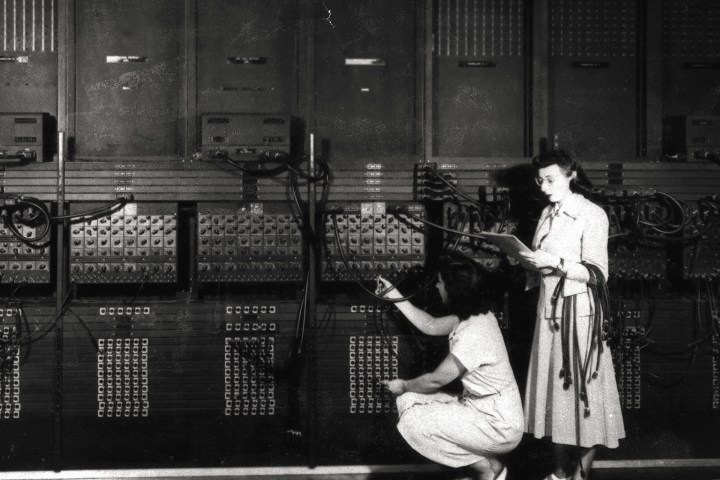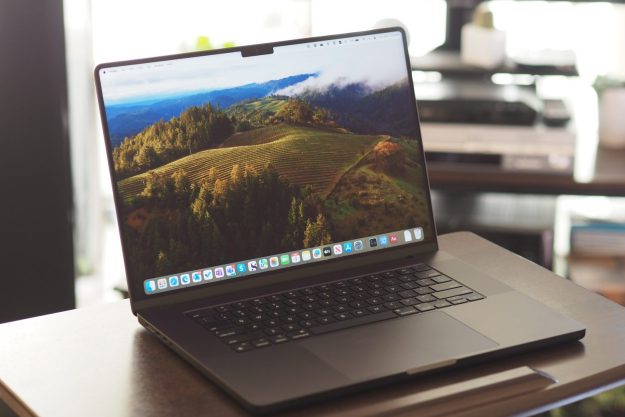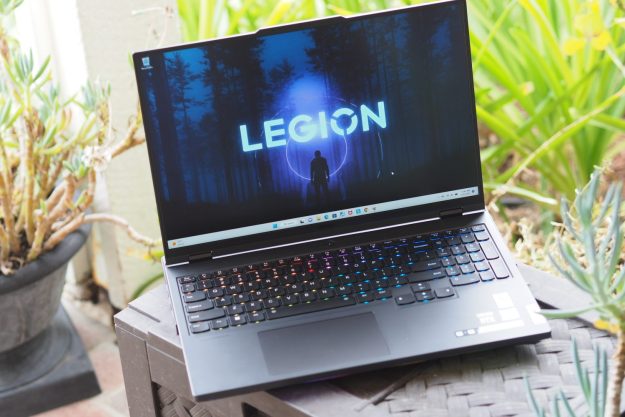
The first computer had a strange, fascinating beginning.
Its construction in the 1940s marked a major milestone in computing’s early history, being involved with research into the hydrogen bomb. It’s celebrated every year on February 15 (ENIAC Day), but it’s just as appropriate to pay it some attention during Women’s History Month in March.

You’d never know from the history books, but the job of programming the first computer fell on a team of six young women. Their contribution to its success was largely glossed over in the years that followed, but all of that has changed. The truth about how the first computer was programmed is a story of that needs to continue to be retold.
The birth of programming
The Electronic Numerical Integrator And Computer, or ENIAC, was the world’s first electronic digital computer, a landmark accomplishment on our journey towards the technological era we’re living in at present. Financed by the United States Army, it would prove to be an invaluable tool in calculating artillery firing tables and early research into the hydrogen bomb.
Even a group dedicated to furthering the status of women in the tech industry had no knowledge.
The creation of ENIAC is a remarkable story in its own right, but there’s an extra facet hidden just beneath its surface. While the design of the computer is credited to John Mauchly and J. Presper Eckert of the University of Pennsylvania, the programming of the system fell to a remarkable group of women: Fran Bilas, Betty Jennings, Ruth Lichterman, Kay McNulty, Betty Snyder, and Marlyn Wescoff.
Despite the trailblazing work the six women did, they’re likely not names that you’re familiar with. Back then, computers were programmed through a physical system of adjusting switches and cables manually — debugging a program meant climbing inside the ENIAC in search of faulty connections. A new program had to first be sketched out on paper, then implemented with extreme precision. Setting up a single calculation could take days, and a full program could take weeks.
The programmers were picked for the task because of their acumen calculating ballistics tables with a desk calculator and a differential analyzer before the ENIAC could be implemented. However, the technical mastery required to operate such a system wasn’t thought of as a major contribution to the overall process. The women who programmed ENIAC were considered to be mere operators, rather than given their due as a key component of the group of people that made the project a success.
Looking back at ENIAC
In 1996 — the 50th anniversary of the ENIAC project — a woman named Kathryn Kleiman sought to do her part to preserve the legacy of a group of women that had made an impact on her life. Inspired by the work of the ENIAC programmers during her studies at Harvard in the 1980s, Kleiman contacted the organizers of the Women in Technology International annual conference to see how they were planning to mark the fifty-year milestone.
The next year, Kleiman would recount in an interview with Wired just how surprised she was to find that the organization had no knowledge of the women she was referring to. Their work had been so thoroughly swept under the rug that even a group dedicated to furthering the status of women in the tech industry had no knowledge of the work ENIAC programmers had accomplished five decades earlier.

To this day, Kleiman continues her work to circulate the story of the ENIAC programmers. For the past few years, she’s been working on a documentary called The Computers, which saw its first theatrical tour earlier in 2015. Hopefully, the film will be able to share the work of the ENIAC programmers with an even broader audience.
There are two elements to the importance of the ENIAC programmers receiving this recognition. Of course, it’s only right that they should be acknowledged for their work, even though the six women at the core of the group have now passed away. However, the impact that their story could have on the next generation of women embarking on careers in the tech industry can’t be understated.
Looking for some insight on the prominence of the ENIAC programmers today, I spoke to the CEO of Women Who Code, Alaina Percival.”These people were pioneers of the tech industry — and they were predominantly women,” she said. “It’s not something that’s commonly known, and it’s not something that’s being emphasized to people.”
Women Who Code is an organization that’s committed to helping women move into technology-focused careers, as well as championing success stories large and small. That could be the completion of the ENIAC system, or it could be a teenager running her first “Hello World” program.
“I had been a programmer for quite a while before I heard about the ENIAC women.”
Like many people working in the tech sector at present, Percival came to the industry having begun her working career elsewhere. According to her, there are more ways into such fields than ever before, many of which don’t require formal training at a technical college as a pre-requisite. However, that isn’t having the expected effect on the proportion of women taking on these careers.
“Just in the past 30 years, we’ve seen the number of women in technology drop from around 40 percent to closer to the 25 percent mark,” she tells me.
There are countless factors that shape those statistics, and the lack of well-known female accomplishments plays a big role. Perhaps if we heard more about the ENIAC programmers, and similar stories of women making significant contributions to the world of tech, there would be more young women eager to make their own mark on the industry.
The next generation
Sarah Allen began programming at the age of twelve, started a company fresh from completing her Computer Science degree, and was in the second class of Presidential Innovation Fellows in 2013. You might recognize her name thanks to her work on Flash video and Adobe After Effects.

“I had been a programmer for quite a while before I heard about the ENIAC women,” she told me when I asked of her familiarity with the group. Allen came across their story as part of research into the history of computing, which would eventually lead her to Kathryn Kleiman.
“When I was leaving college, I was under the misconception that women had started programming in the ’60s and ’70s,” Allen said. “People told me that I was a pioneer, because I was a woman in the field.”
The uncovering of a secret history of women programmers should have offered up a message of empowerment. However, the very fact that the accomplishments of the ENIAC programmers had been folded into those of the men that designed the system puts quite a different spin on the story. A trailblazer’s lead can’t be followed if her work is immediately obscured.
Bringing women into the world of technology is just the first step.
Thankfully, efforts are being made to ensure that doesn’t happen. Kathryn Kleiman has put together her film on ENIAC and is screening it around the country. Alaina Percival continues to lead Women Who Code in carrying out projects to establish an international community of women in the industry.
And Sarah Allen continues to share her ideology that programming is a life skill — a stance that will surely become increasingly common over the next decade. In 2009 she co-founded RailsBridge, an organization that promotes diversity in tech through easily accessible teaching workshops that are open to all.
Bringing women into the world of technology is just the first step. Allen has a laundry list of organizations looking to make the industry more diverse — the Level Playing Field Institute, Black Girls Code and #YesWeCode to name just a few. However, she also has some straightforward advice for any woman taking their first steps into a career in technology.
“There is a normal where men and boys actually just respect you, as a peer. Those are the organizations, and those are the groups that you should be looking towards.”
This article was originally published in August 2015. It’s been updated for modern context. It is part of a continuing series of stories in which we look at the great contributions women have made to technology — past and present — as well as the hurdles they faced and the foundations for the future they’ve laid for the next generations of women in technology.




